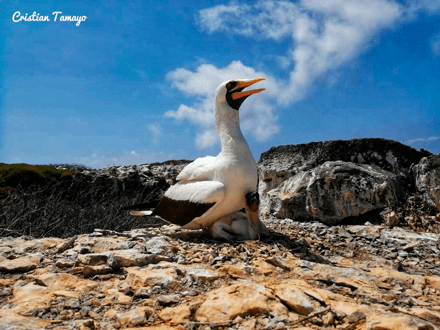ESPAÑOLA
Espanola Island is one of the smallest and oldest islands in the Galapagos Archipelago. It is situated in the southeast region, approximately 2 hours away by yacht from Puerto Baquerizo Moreno on San Cristóbal Island. This volcanic island is notable for its isolation, which has led to a high percentage of endemic species.
Punta Suarez is located on the western side of Espanola Island and offers a scenic 2-hour walking trail (1.6 km). Along the path, you can observe coastal cliffs and a variety of animal species, including Galapagos Hawks, Espanola Cactus Finches, Nazca Boobies, Blue-footed Boobies, Galapagos Doves, Fork-tailed Gulls, Frigatebirds, Red-billed Tropic Birds, Yellow Warblers, Medium Ground Finches, Warbler Finches, Espanola Mockingbirds, Christmas Marine Iguanas, Espanola Lava Lizards, Espanola Racer Snakes. From April to December, you may even witness the mating, nesting, and fledging of Albatrosses that migrate to Espanola Island.
The Blowhole is another notable attraction on the island. It is a water spout that reaches an impressive height of 20 meters. The water pressure created by the forceful entry and exit of water through the cracks colliding with the rocks causes this natural spectacle.
Gardner Bay, located on the northern coast of Espanola Island, features a beautiful white sand beach. This beach serves as a habitat for juvenile sea lions, adult males, and females. It is also home to a diverse range of resident and migratory birds. In the waters near the islets of Gardner Bay, you can go snorkeling and observe sea turtles, rays, and numerous sea lions swimming, frolicking, and playing in close proximity.
Espanola Island is truly a paradise for bird lovers, offering a unique opportunity to witness and appreciate a remarkable array of avian species in their natural habitat.




